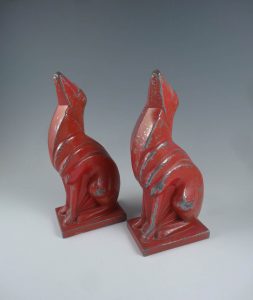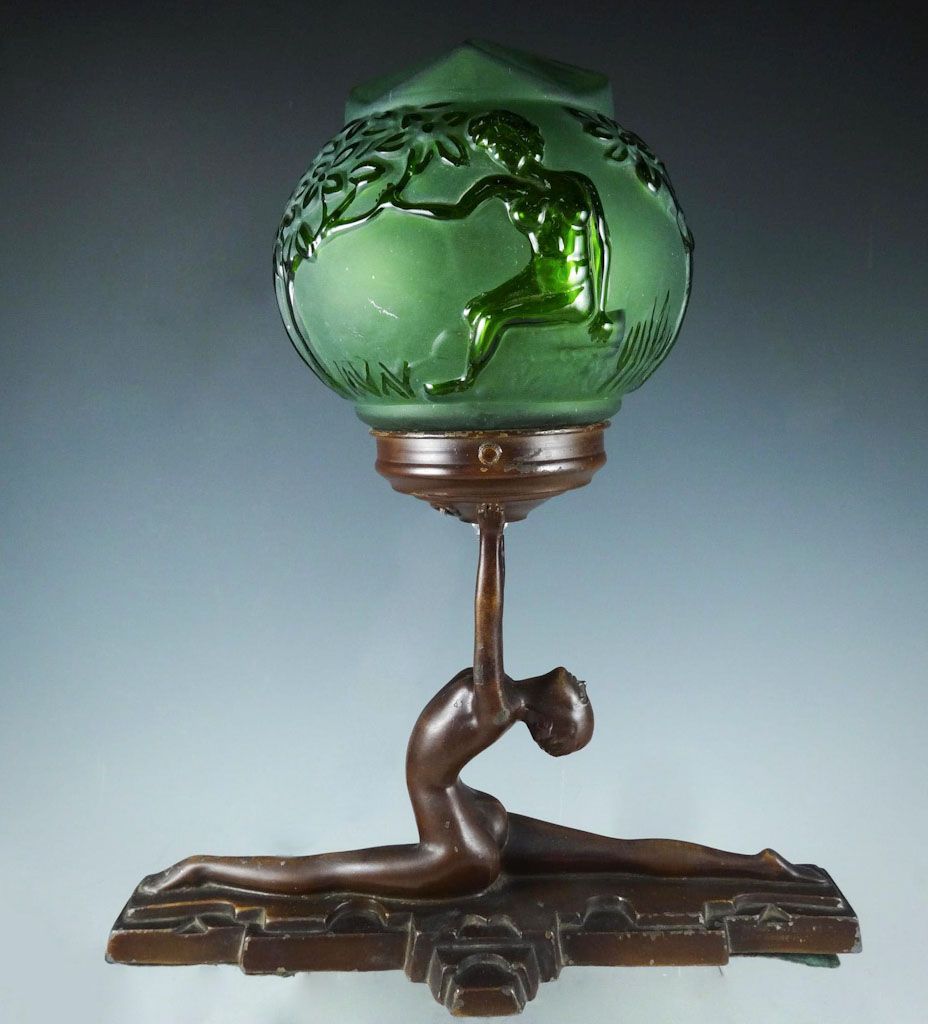
Frankart & Nuart: Innovators of Everyday Art Deco Design
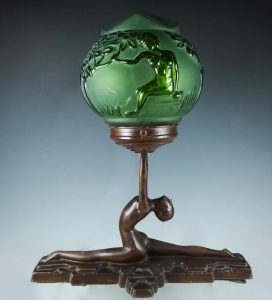 At Mark Lawson Antiques, we are endlessly excited to see the array of treasures folks bring in for evaluation. Though we are fortunate to see a potpourri of beautiful items every day, we take special delight in evaluating and buying Art Deco antiques of any kind. The form and style of Art Deco pieces are almost as popular now as when they first debuted in the 1920s. It is easy to understand why. The design is all at once sophisticated, modern, natural, luxurious, and elegant. What more can you ask for?
At Mark Lawson Antiques, we are endlessly excited to see the array of treasures folks bring in for evaluation. Though we are fortunate to see a potpourri of beautiful items every day, we take special delight in evaluating and buying Art Deco antiques of any kind. The form and style of Art Deco pieces are almost as popular now as when they first debuted in the 1920s. It is easy to understand why. The design is all at once sophisticated, modern, natural, luxurious, and elegant. What more can you ask for?
The Dawn of Art Deco Design
Sandwiched between the dreadfulness of two world wars, the era of the 1920s shone as a time of hope, prosperity, and flourishing artistic and cultural innovation. Variously known as the Roaring Twenties, Jazz Age, or Années folles (Crazy Years), the carefree days of the 1920s were financed by an incredible economic boom. With new money at the ready western societies were able to let their creative imagination redesign fashion, architecture, automobiles, art glass, furniture, jewelry, and even household objects. The emerging modernist visual style, termed Art Deco, took its name from the Exposition Internationale des Arts Décoratifs et Industriels Modernes (International Exhibition of Modern Decorative and Industrial Arts) held in Paris in 1925. The High Art Deco aesthetic eventually pervaded everyday style and popular decorative arts. Two of the most famous American makers of beautiful utilitarian designs are Frankart and Nuart.
Frankart
From a modest start offering items in consignment shops in New York City, Arthur von Frankenburg, became a widely respected sculptor and designer in the 1920s and 30s. The sculptor’s popularity stemmed from his determination to create pieces that were functional, attractive and available to most budgets. His pieces typified the exuberance and the push toward modernity of the 1920s.
When Arthur Von Frankenburg developed Frankart, Inc., he only sold his small collection of designs in New York City. His work was almost immediately popular and soon attracted the attention of investors. Along with early business partners, von Frankenburg expanded his design base from 30 items to almost 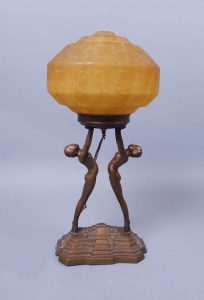 100 by the early 1930s. Some of the items developed over the years included bookends, ashtrays, nymph/fairy figurines, clocks, aquariums, and lamps. The domestic popularity of these pieces soon spread to international collectors. Frankart Inc. also developed a series of nudes that were extremely popular and were unrivaled by contemporaneous artists.
100 by the early 1930s. Some of the items developed over the years included bookends, ashtrays, nymph/fairy figurines, clocks, aquariums, and lamps. The domestic popularity of these pieces soon spread to international collectors. Frankart Inc. also developed a series of nudes that were extremely popular and were unrivaled by contemporaneous artists.
Unhappy with his business partnership, Von Frankenburg left the company in the early 1930s. His ex-business partners continued to design under the title of Frankart, Inc. Because their modernist pieces so beautifully exemplified the high spirits of the Art Deco era, the Frankart brand remained successful for several years following the sculptor’s departure. Not much is known about von Frankenburg after the 1930s, but his design legacy continues to be very popular and highly collectible.
Nuart Metal Creations
Though just as prolific as Frankart, there is not much written history about the Nuart Metal Creations company. Also based out of New York City, Nuart produced 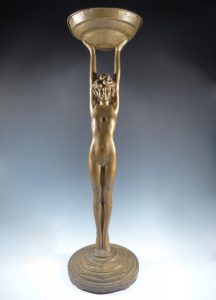 similar kinds of decorative household items as their competitor. Many of their products prominently celebrated the form of the female nude. This firm produced their items in white metal and offered their creations in four finishes: Tiffany Green, Bronze, Ebony, and Oriental Red. Nuart distributed their wares through the Gift House, Inc. shop located on Broadway in New York City. Like Frankart, Nuart made lamps, bookends, ash trays, candle holders, cigarette boxes, and sculptures. Nuart pieces are typically marked for maker.
similar kinds of decorative household items as their competitor. Many of their products prominently celebrated the form of the female nude. This firm produced their items in white metal and offered their creations in four finishes: Tiffany Green, Bronze, Ebony, and Oriental Red. Nuart distributed their wares through the Gift House, Inc. shop located on Broadway in New York City. Like Frankart, Nuart made lamps, bookends, ash trays, candle holders, cigarette boxes, and sculptures. Nuart pieces are typically marked for maker.
Decline & Resurgence of Art Deco Style
The Art Deco style somewhat declined in popularity in the 1930s and 1940s. The collective weight of the Great Depression and second World War dampened the extravagant spirit associated with Art Deco. People perceived the motifs to be ostentatious and inappropriately luxurious; a taboo in wartime when sacrifice amounted to patriotism. Spending several years out of fashion, more prosperous times helped to renew interest in Art Deco motifs. Today the style continues to be a source of inspiration for decorative arts, fashion, jewelry design, and architecture.
If you have any Art Deco pieces, or even Frankart or Nuart specifically, please feel free to contact us. We would be happy to help. To schedule an appointment for a free purchase evaluation, call us today at (518) 587-8787 or contact us at marklawsonantiques@gmail.com. We have offices in Saratoga Springs and Colonie, conveniently located for our clients in the Albany, NY and surrounding Capital Region.
Additional Resources
A Great Resource for Explaining Art Deco Design— Art Deco Society of New York
History and Concepts of 20th Century Design–The Art Story
Rene Lalique: Art Deco Design Pioneer–Lalique Museum in France
History of an Art Deco Lalique Lamp–Metropolitan Museum of Art
Example of Art Deco Jewelry–Metropolitan Museum of Art
By Renee Morgan
1920s, Antiques, art deco, Arthur Von Frankenburg, Design, Frankart, Machine Age, NuArt, Paris, Roaring Twenties

